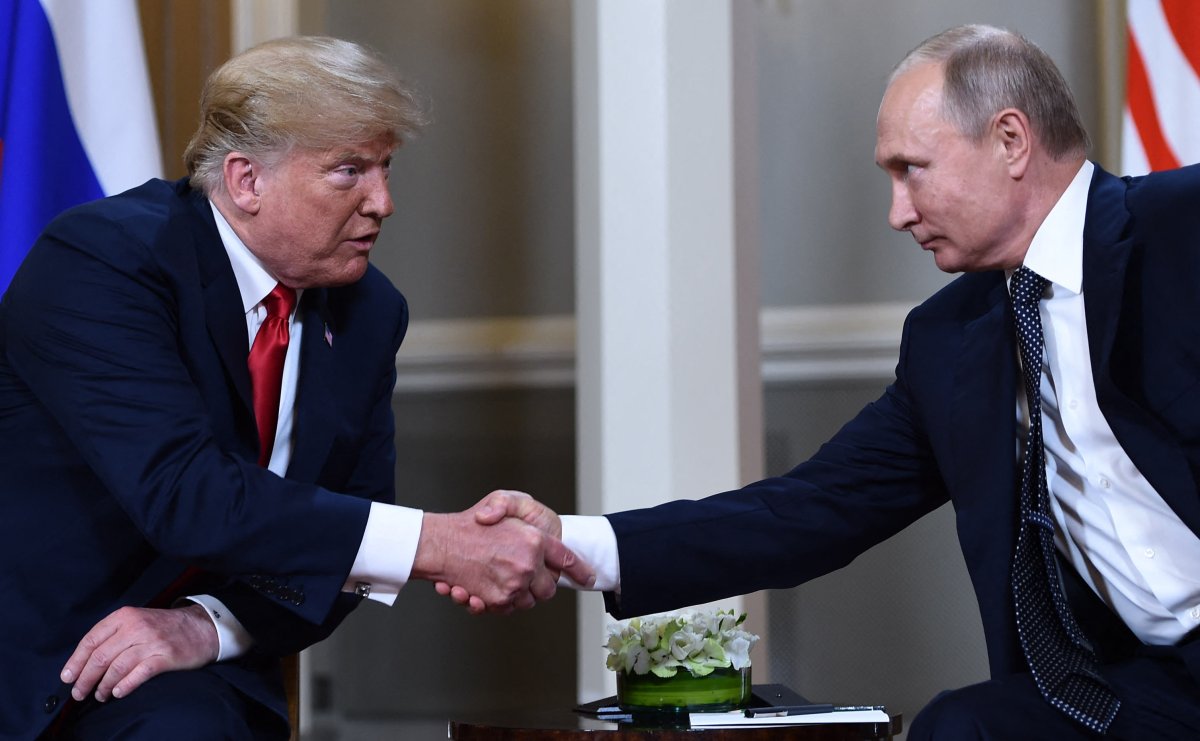ARTICLE AD BOX
WITH its sandpit, slide and paddling pool, plus a team of home helps, Hedwig Höss considered her new home to be “paradise” for her and her five children.
So much so that when her husband Rudolf was transferred to a more important post far away, she refused to leave it, and he went alone.
 A24 FILMS
A24 FILMS Zeitgeschichte München/ Rainer Höss
Zeitgeschichte München/ Rainer Höss Getty
GettyLife then carried on in her idyllic family home — while just a few yards away on the other side of the mansion’s wall, unspeakable horrors were being perpetrated in Auschwitz concentration camp, where Rudolf Höss oversaw the extermination of between one and two million Jewish people in World War Two.
Now a new film, The Zone Of Interest, by British director Jonathan Glazer, examines the extraordinary and shocking everyday life of Hedwig, her husband and their children in the house next door to the gas chambers.
From their villa they could see the smoke billowing from the chimneys at the camp in occupied Poland, where Höss decided to use a pesticide, Zyklon B, to kill Jewish men, women, children and the elderly. He was brought to justice after the war, thanks to a British Nazi-hunting team led by a German Jew.
Jonathan, best known for the Ray Winstone cult hit Sexy Beast and the Scarlett Johansson thriller Under The Skin, wanted to try to understand how anyone could commit such evil acts.
The 58-year-old Jewish filmmaker said: “I visited the house and the garden, which is not exactly like it was then, but it still exists.
“And being there, in that space, what struck me was the proximity of it to the camp.
“The house shared a wall with Auschwitz. It was all happening right there, on the other side of that wall.
“And the fact that a man lived there, and brought up his family there. How do you do that? How black a soul must be.”
By most accounts Rudolf Höss had an unfathomably sadistic personality.
Brought up in a strict religious household by his father Franz, a former army officer, Höss served with the German army in the Middle East in World War One, aged just 15.
Even during the 21 years of relative peace between the two world wars, Höss continued to fight. He joined the mercenary military Freikorp force, taking arms against Polish people and the French, and was one of the earliest members of Adolf Hitler’s Nazi Party.
Höss’s brutality was revealed to the authorities when he beat a right-wing German school teacher to death in 1923, believing the victim had betrayed a fellow fascist.
He was given a ten year jail sentence, but got out after just four years inside thanks to an amnesty.
Höss committed the murder on the orders of Martin Bormann, who would go on to be Hitler’s chief thug.
It was this willingness to follow commands, no matter how gruesome, that led Höss to be selected to work for the feared SS in Dachau concentration camp in Bavaria in 1934.
While there he was part of the firing squad that shot dead the first conscientious objector to be killed by the Nazis for refusing to join the war.
At Sachsenhausen camp in Berlin his sadism included ordering prisoners to stand outside in freezing temperatures as cold as minus 26 Celsius.
When other inmates tried to help the dying men by taking them to the medical wing, Höss locked them in and it is believed that 145 inmates died.
In 1940 he was sent to set up and look after a prisoner-of-war camp in southern Poland called Auschwitz.
“The zone of interest” – interessengebiet in German – was the term used by the SS for the area around this conveyor belt of human destruction.
The entrance to the camp carried the slogan Arbeit Macht Frei – which means work sets you free – when in reality the forced labour killed many of the inmates.
 Refer to Caption
Refer to Caption AP
AP AP
APThose prisoners that were chosen to work in the Höss family home had a greater chance of survival.
The couple had a cook, teacher, painter, tailor, chauffeur and hairdresser, with their gardener Stanislaw Dubiel being saved from execution in the camp by Hedwig.
But he said: “Frau Höss often reminded me about the incident, thus forcing me to be zealous in doing whatever she asked me to do.”
It was even worse for political prisoner Eleonore Hodys who was pursued by heavy drinker Höss, while Hedwig had an affair with a prisoner called Karola Bohnera.
These sexual entanglements formed a key part of a book called The Zone of Interest by the late British author Martin Amis, that inspired Jonathan’s film.
The movie, though, is very different from the novel.
It looks more at their regular lives, having picnics, picking berries, playing in the nearby river and making holiday plans.
Jonathan said: “I wanted to show that these were crimes committed by Mr and Mrs Smith at No 26.”
The film does not show what happened inside Auschwitz. Those horrors were too terrible to recount on film.
But Höss’s own words reveal how devoid of empathy he and the other architects of the so-called Final Solution, which aimed to eliminate all Jew in Europe, were.
He said that: “When I set up the extermination building at Auschwitz, I used Zyklon B, which was crystallised prussic acid which we dropped into the death chamber from a small opening.
“It took from three to 15 minutes to kill the people in the death chamber, depending upon climatic conditions.
“We knew when the people were dead because their screaming stopped.”
The camp guards told the prisoners that they were taking a shower, when in fact they were being sent to their deaths.
Höss boasted of perfecting the art of mass killing saying “you could dispose of 2,000 head in half an hour” after the gas chambers were switched on in 1943.
A large mound was built at the Höss home, so that most of the camp could not be seen, but Höss told his wife some of what was going on.
Despite that when the camp commander was transferred to the Concentration Camp Inspectorate in the German capital Berlin later in 1943, she refused to join her husband.
A servant overheard Hedwig saying something along the lines of “They’ll have to drag me out of here, we’re living how we dreamed we would.”
Historian Ian Baxter, who wrote the book The Commandant and visited the Höss villa, told The Sun: “He saw himself as an administrator.
“He believed wholeheartedly that no one else could perform as well as him in such terrible circumstances.
“Within just three years of becoming commandant he had turned the Auschwitz complex into the largest mass murder factory in the history of the world.”
When the German forces surrendered at the end of April 1945, the Höss family fled close to the Danish border where he changed his name and pretended to be a gardener.
The film does not cover the determined efforts of Nazi hunter Hanns Alexander to bring the mass murderer to justice.
Hanns, whose Jewish family fled to London from Berlin in 1936 on realising what the Nazis were capable of, joined the British government’s Number One War Crimes Investigation Team shortly after the war ended.
Höss had evaded capture for almost a year before Hanns discovered where Hedwig was living.
When she refused to reveal the Auschwitz commander’s hiding place, Hanns threatened to send her son to the feared Russian prison camps in Siberia.
Hedwig relented and Hanns led 25 British soldiers to the farm where her husband was living under the fake name Franz Lang in March 1946.
When Höss produced false papers, Hanns told him to hand over his wedding ring.
“I can’t, it’s been stuck on my finger for years,” said Höss.
“No problem, I’ll cut it off,” Hanns said before grabbing a kitchen knife.
The Nazi handed over the ring and inside were the names Rudolf and Hedwig.
Höss provided key evidence at the Nuremberg military tribunal later that year about the organisation of the Final Solution.
He admitted: “I commanded Auschwitz until 1 December 1943, and estimate that at least 2,500,000 victims were executed and exterminated there by gassing and burning, and at least another half million succumbed to starvation and disease, making a total of about three million dead.”
The dead included political prisoners and prisoners of war, but it is believed Höss might have exaggerated the numbers and the concentration camp’s museum itself puts the death toll at “over 1.1million”.
Höss was hanged at Auschwitz by the Polish authorities in 1947.
The Nazi hunter’s heroics would have been forgotten if it was not for his great-nephew, British-American journalist Thomas Harding, who wrote about them in his 2013 book Hanns And Rudolf.
In 2010 he tracked down the couple’s daughter Brigitte to her home in America, where she told him that her father was “the nicest man in the world” and must have had another side to his personality.
Hedwig died aged 81 in 1989 and Hanns died in 2006 aged 89.
With so few people who witnessed the Nazi genocide left to tell their tale, Jonathan felt it was important to make sure we don’t forget.
His movie was up for three Golden Globes on Sunday night, including Best Drama, has been named best film by the influential Los Angeles Film Critics Association and has been described as a “masterpiece” by critics.
Jonathan said: “We’re talking about arguably one of the worst periods of human history, but we can’t say, ‘Let’s put it away’, or ‘It’s not us, we’re safe, it was 80 years ago’.
“We can’t think that it doesn’t relate to us any more. It clearly does, and troublingly, it may always.”
- The Zone Of Interest is in cinemas from February 2.
 Wikipedia
Wikipedia Courtesy of Alexander Family Archive.
Courtesy of Alexander Family Archive..png)
 1 year ago
5
1 year ago
5








 English (US)
English (US)